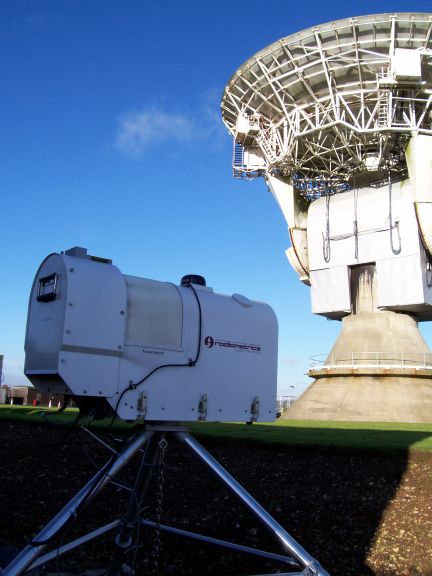
A Radiometrics MP1516A Water Vapor Profiler now operates at CFARR; it was installed during August 2007. The instrument operates continuously and provides measurements of the zenith sky brightness temperature at 21 frequencies in the range 22-30 GHz; this region of the microwave spectrum includes a water vapour absorption line. From these measurements the integrated water vapour and total liquid water at zenith are derived, together with the vertical profile of water vapour density.
Due to the complex nature of the relationship between brightness temperature measurements and the processed data products, some degree of uncertainty is inevitable.
Measurements by microwave radiometers are sensitive to external conditions, in particular to water on the radome of the instrument. Measurements made during such conditions suffer far greater uncertainties than those in dry conditions. It is recommended that data users use measurements from the CFARR rain gauges if they wish to know when rain occurred at the site.
The vertical water vapour profiles provide an indication of the content and distribution of water vapour with relatively low vertical resolution. Sharp changes in water vapour content or complex layer structures may not be detected.
The new Radiometrics instrument replaces radiometers at 22.2, 28.8 and 37.5 GHz which operated at the Chilbolton Observatory from 2003.
Bandwidth of each channel: 300MHz
(The signal is integrated over a band spanning the range 10-160 MHz below and above the centre frequency.)
3dB beamwidth: varies from 6.3 degrees to 4.9 degrees across the full frequency range
Brightness temperature accuracy per channel: 0.5K-1K
Measurement frequency: approximately 2 minutes
Accuracy of integrated water vapour (IWV) retrieval: ~1-2 kg/m2
Accuracy of total liquid water path (LWP) retrieval: ~15% in non-precipitating conditions.
If data are used in any publication or report then acknowledgement must be given to the Radio Communications Research Unit at the STFC Rutherford Appleton Laboratory for providing the data.
If you have problems obtaining the data, please contact the British Atmospheric Data Centre.